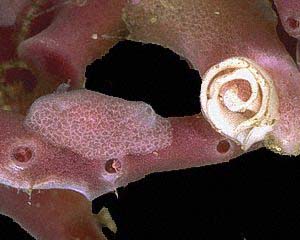
Jorunna sp. 1.
Order: NUDIBRANCHIA
Suborder: DORIDINA
Family: Dorididae
DISTRIBUTION
Found throughout the tropical Indo-West Pacific.
PHOTO
On purple sponge, Callyspongia sp, Kurnell, Botany Bay, New South Wales, Australia. May 1986. PHOTO: Bill Rudman
RELATED TOPIC
Defensive colouration in sea slugs
Species of Jorunna are superficially very similar to Rostanga but they differ in reproductive and radular morphology. This purple 'species' is always associated with a similarly coloured sponge. However there are also other 'species' with colours matching their food sponges so it is possible there is only one variable species which changes colour to match its food sponge.
Authorship detailsRudman, W.B., 1998 (October 14) Jorunna sp. 1. [In] Sea Slug Forum. Australian Museum, Sydney. Available from http://www.seaslugforum.net/find/jorupurp
Related messages
Jorunna from Bare Island, Sydney
September 21, 2005
From: Nicholas Missenden
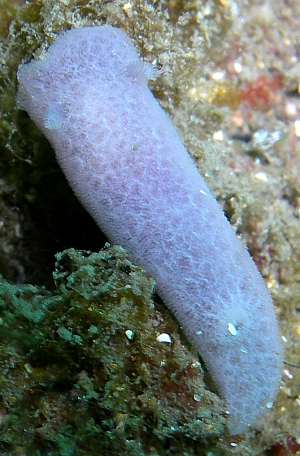
Hi Bill,
Could you please tell me if this nudi is a Jorunna pantherina? Its the closest I could get from pictures on the forum. I have attached three pictures. The third shows the grey sponge that it was found on. Although the picture makes the sponge look pinkish.
Locality: Bare Island, West Reef, Botany Bay, Sydney, NSW, Australia.
Depth: 8 m. Length: 20 mm. 10 September, 2005. Broken reef, sandy bottom. Photographer: Nicholas Missenden
Thanks again,
Regards
Nick
njmpm@iinet.net.au
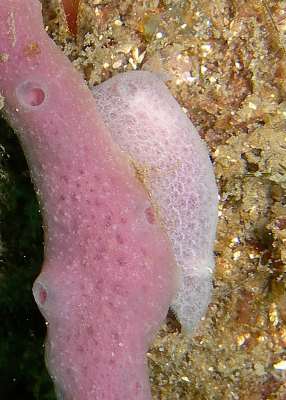
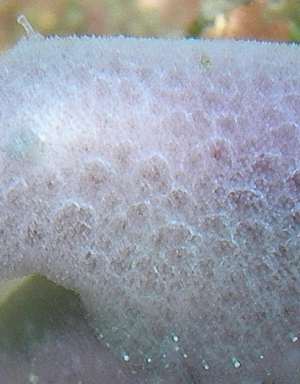
Dear Nick,
Almost correct. It is what I am calling Jorunna sp. 1 . I am pretty sure it is different from Jorunna pantherinam and it is always found on this purplish sponge, which it mimics very well..
Best wishes,
Bill Rudman
Growth rate in Jorunna sp. 1.
February 2, 2005
From: Denis Riek
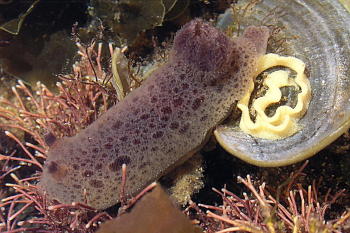
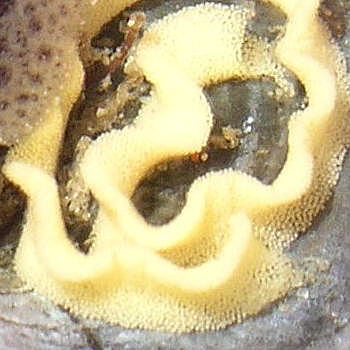
Dear Bill,
Thanks for the very quick reply on my previous letter.You are quite right about the big wets we sometimes get on the east coast of Australia.Can't complain, it was getting very dry here. One other positive to come out of such events is that a known starting point is established when observing growth rates. We actually had 2 big flushes here,7 weeks apart. The first was quite big, so much topsoil in the river that you could almost walk across and a dive a week later failed to find any slugs, let alone much of anything else. I am convinced no slugs survived.
A dive along the inside of the main sea wall the day before the next flush revealed only 2 Austraeolis ornata but a large number of Jorunna pantherina (I.D.Correct?), up to 10-12 under some rocks. Sizes from 10-22mm and many egg ribbons. All this activity and growth in such a short time. This seems very rapid as there must not have been much food for a while.I know that 7 weeks was the elapsed time. Hope this information is of some use.
Locality: Brunswick River, nthn New South Wales. Australia.
Depth: 2-4 metres. Length: 22 mm. 1 December 2004
Under rocks on main sea wall. Photographer: Denis Riek
Cheers,
Denis.
denisriek@hotmail.com
Riek, D.W., 2005 (Feb 2) Growth rate in Jorunna sp. 1.. [Message in] Sea Slug Forum. Australian Museum, Sydney. Available from http://www.seaslugforum.net/find/12819Dear Denis,
Thanks for these interesting observations. If they have indeed done all this growing in 7 weeks it's quite impressive - considering that the sponge also would have needed to settle and grow as well. I have found Jorunna and its sponge in some pretty terrible 'ecological slums' so it's possible the sponge may have survived the floods, but as you say, these freshwater influxes are very devastating to the marine fauna so that's unlikely. It's a good example of how little basic information we have about most of our marine fauna.
Concerning the identity of this species. I think the purple one is distinct from Jorunna pantherina. Whereas J. pantherina appears to range in colour from brown to green and pale yellow, the purple species is always found on this purple sponge. There seem to be some consistent anatomical differences as well.so at present I am calling it Jorunna sp. 1 .
Best wishes,
Bill Rudman
